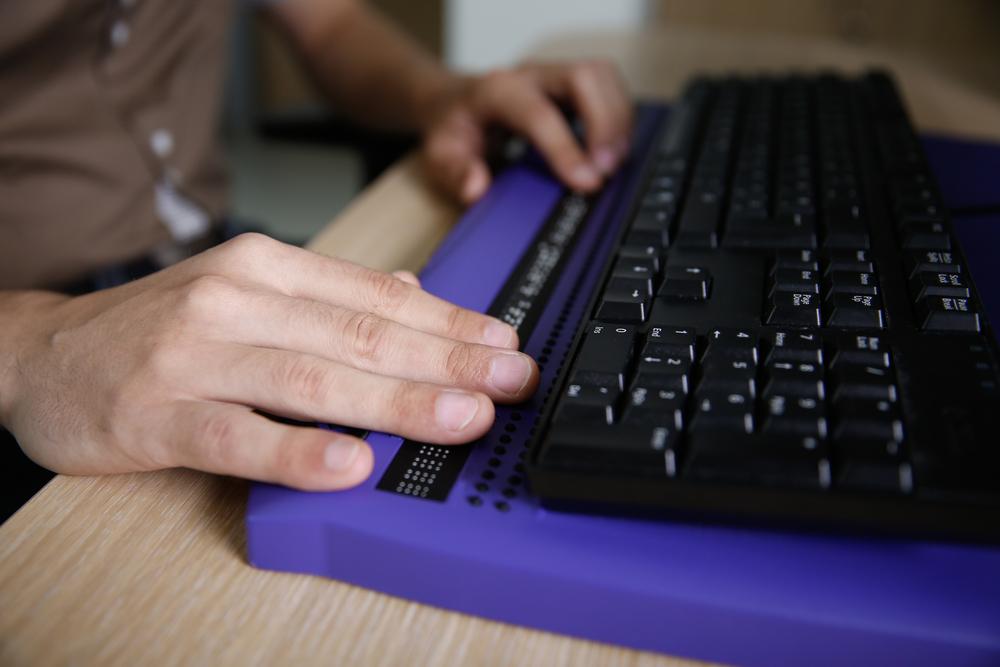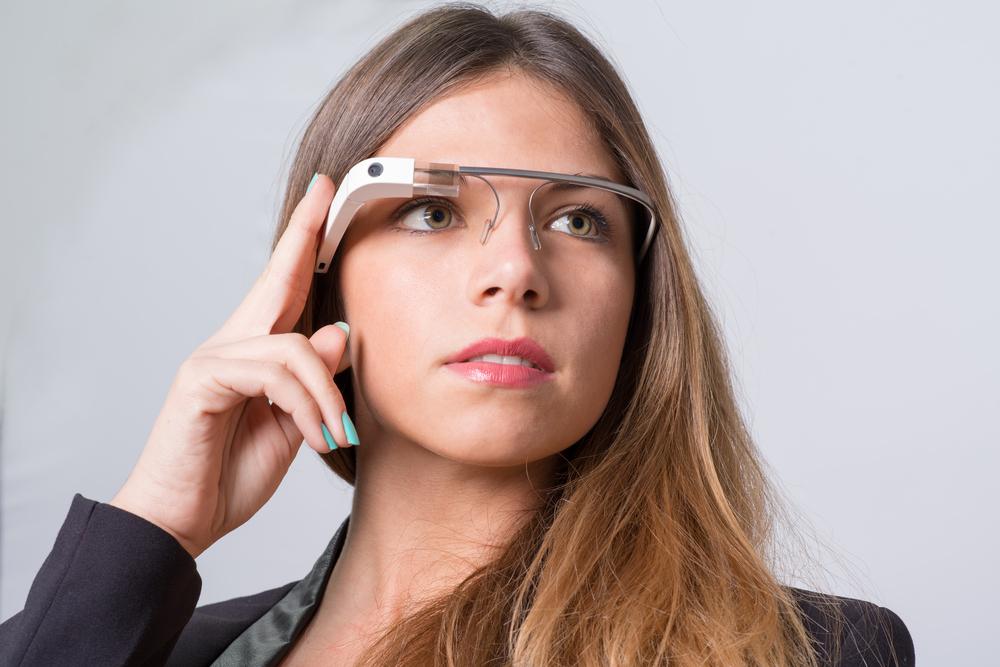Business News Daily provides resources, advice and product reviews to drive business growth. Our mission is to equip business owners with the knowledge and confidence to make informed decisions. As part of that, we recommend products and services for their success.
We collaborate with business-to-business vendors, connecting them with potential buyers. In some cases, we earn commissions when sales are made through our referrals. These financial relationships support our content but do not dictate our recommendations. Our editorial team independently evaluates products based on thousands of hours of research. We are committed to providing trustworthy advice for businesses. Learn more about our full process and see who our partners are here.
The Smart Office: How Connected Tech Is Redefining the Workplace
Are you taking advantage of the technology that can make your business a better place to work?

Table of Contents
The proliferation of more advanced technology is changing the way people do business. Developments such as the internet of things (IoT) present a variety of diverse opportunities across many industries and are remaking the modern workplace and streamlining operations. This shift is evident in the trend toward creating the so-called smart office — also known as the responsive or digital workplace — in which technology is used to make the physical work environment intelligent and adaptable to company workflows.
What is a smart office?
A smart office or responsive workplace is a workspace design that uses technology to adjust to the varying needs of the people using it.
“‘Responsive’ means that every aspect of the workplace campus, from collaborative tools to the built space, is able to respond to an individual’s needs and context,” Campbell Hyers, founder and CEO of Location Engine, told Business News Daily. “The opportunity in workplace campus design is to build amenities that improve both experience and the bottom line.”
The idea behind the responsive workplace is to unify operations under one system and empower that system with machine-learning capabilities. By doing so, businesses can get more out of their employees while keeping them happier, as well as analyze a vast amount of data to make more-informed business decisions.
“A smart office will be a tech-heavy office that will leverage technology to automate routine and everyday tasks to really optimize how we do work,” said Luka Birsa, co-founder and chief technology officer of Visionect, a digital-signage company. “Smart offices will boost productivity by freeing up employee time to do real work — the work technology can’t do.”
Examples of smart office technology
Here are just a few examples of what a smart office might include:
Internet of things
“IoT will definitely be involved in the smart office,” said Lou Reinisch, former associate provost for academic affairs at the New York Institute of Technology. “Smart lights, thermostats, virtual reality cameras, virtual reality speakers, etc. are all instrumental to the smart office.”
Machine learning
“Machine intelligence is also showing up in fields like knowledge and management,” Hyers said. “Think about how powerful it is for a computer to be able to tell you the best person to speak with about a particular feature in your company’s product suite. The new workplace should be like a gym that has all of the equipment that you could never have at home, but instead of exercise, the workplace makes you faster, stronger and smarter.”
Interconnectivity and control
“We also use a lot of smart devices — smart switches, dimmers, relays — to control everything in our school and office, from light to power consumption,” said Julien Cyr, CEO of the Holberton School France. “We have a lot of sensors, too — UV, temperature, lux — and all of the automation systems [are] connected to our apps, like Slack, so we can order a coffee from a Slack channel, as well as dim the light of a specific desk!” [Find out how to resolve the office temperature debate.]
Improved communication tools
Smart offices also feature technologies that improve human-to-human communication for both in-person and remote employees. These tools can include digital whiteboards for easily syncing notes and facilitating brainstorming sessions, improved conference rooms featuring high-definition cameras and microphones for productive video conferencing calls, and high-quality document management systems hosted in the cloud.
To see what a smart office might look like, check out this video tour of Cisco’s smart office, which is designed for hybrid work.
What technology do you need for a smart office?
When building a smart office, it’s important to remember that not every business’s needs are the same.
“The smart office is up to date with the available technology best suited for [a particular industry],” said Ervis Zeqo, business development manager and IT security consultant at eMazzanti Technologies. “That might be IoT for a manufacturer, VR for a design firm or AI for a big data company. What is smart for one may not be for another, and it’s always changing.” [Learn how artificial intelligence (AI) is transforming business.]
There is also a high bar for adoption; all of the technology required to build a truly smart office is expensive. Moreover, there aren’t a lot of test cases in the market right now, so many companies might be hesitant to make the initial investment required to implement a responsive workplace program without the assurance that it will provide a return.
“The major obstacle is to convince companies that the improved productivity is worth the initial investment to build the smart office,” Reinisch said. “Many companies tend to base decisions on ‘benchmarking.’ Since this sort of office is not common, it will not be in any of the benchmark comparisons. Offices like this will only be built in companies with creative employees and where the bosses trust the creative employees to know what the employees need.”
However, the needle is definitely moving on smart-office adoption. According to a market forecast from Allied Market Research, the global smart-office market is expected to have a compound annual growth rate of 11.1 percent each year between now and 2030. Should the projections hold, the smart-office market is predicted to reach $90.63 billion as an ever-expanding number of businesses employ the technological underpinnings inherent within this shift.
What are the benefits of smart-office technology?
By incorporating the tools highlighted above and other smart technology, companies can boost employee morale, increase productivity and reduce energy consumption. For example, research highlighted by Timbergrove, which specializes in IoT and automation solutions, suggests that smart buildings utilizing technologies such as temperature sensors, smart thermostats and accounting sensors for human occupation could cut energy costs by 15 to 25 percent.
For some businesses, using smart-office technology to create a responsive workplace offers an opportunity to extend the office far beyond its walls and enable more complete remote collaboration. While some adopters focus primarily on harnessing digital tools to remake the physical office, others see technology as capable of severing the ties that bind employees to any one locale.
“The smartest office may be no office at all,” said Mike Finley, a machine-learning expert and co-founder of AnswerRocket, an analytics company. “With people working where they want to be, productivity and morale improve while costs fall. The outdated idea of ‘eyes on’ supervision can be replaced by real measurements of progress, in real time, by tools that connect business processes to profits. Augmented-reality meeting spaces are already taking shape and enabling a new level of collaboration.”
The potential for the responsive workplace to dissolve the traditional boundaries of the office could have an immense impact on employees’ attitudes and the quality of the work they produce. When employers grant workers autonomy, these employees tend to feel their work is more meaningful. But in incorporating smart-office technology, employers don’t have to trade accountability for worker freedom. A marriage of technology and flexibility allows workers the space they need to produce at their best level without undermining employer supervision. (Always keep in mind, however, the laws and ethics involved in employee monitoring.)
“A smart office … should be tailored to answer [business] needs and should be able to grow with the employees and companies, learn from them and then give them suggestions on their work,” Birsa said. “Smart-office tech doesn’t need to be earth-shattering. What it will need to do is fit company workflows as seamlessly as possible and improve the way people work without taking time out of their workday to learn the ropes.”
Working smarter
As the technology underpinning smart offices becomes more mainstream, businesses will increasingly adopt various tools for improving the workplace. While not every company will have the resources or desire to implement a full smart-office rebuild as Cisco did, specific elements can suit small businesses. Already, some aspects that not so long ago seemed impossible — like digital collaboration spaces for real-time document sharing and editing — are extremely commonplace today.
As work-from-home and hybrid trends continue, some employers may prioritize certain elements of smart-office technology over others. Video conferencing upgrades, like smart cameras and high-definition microphones, for instance, may become much more common than smart thermostats or internet-connected coffee machines. However, smart offices are definitely more than hype — and they’re here to stay.
Jeremy Bender contributed to this article.
















